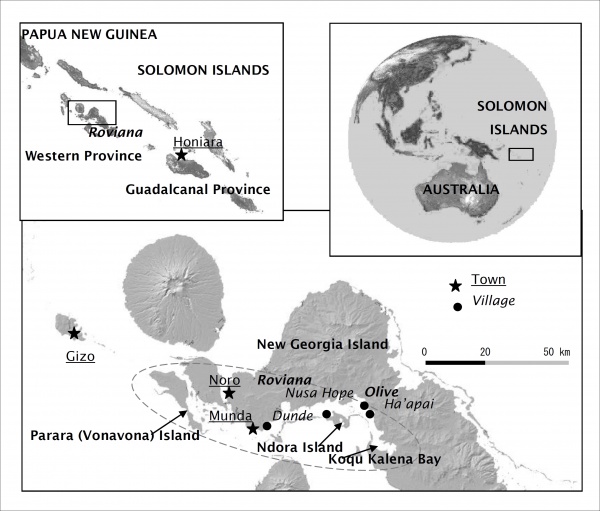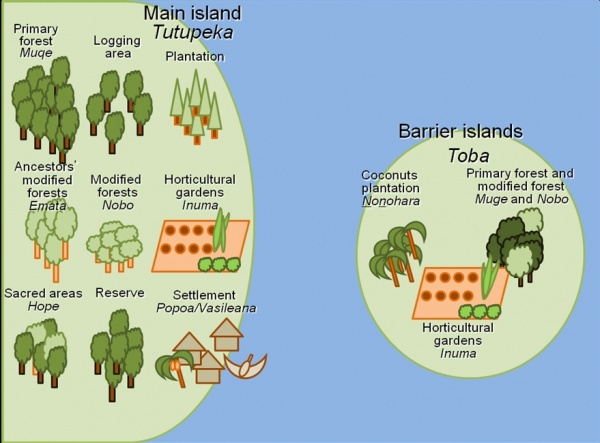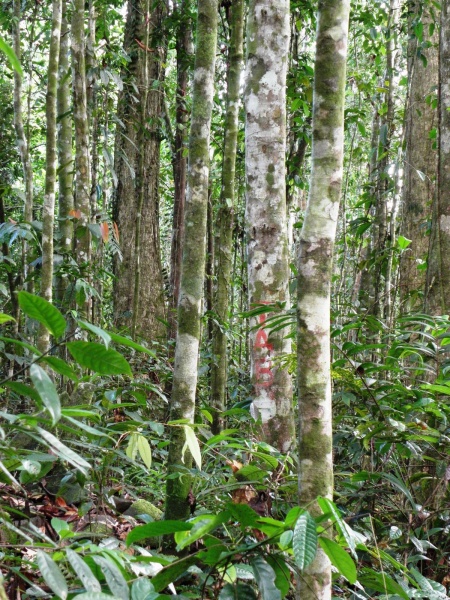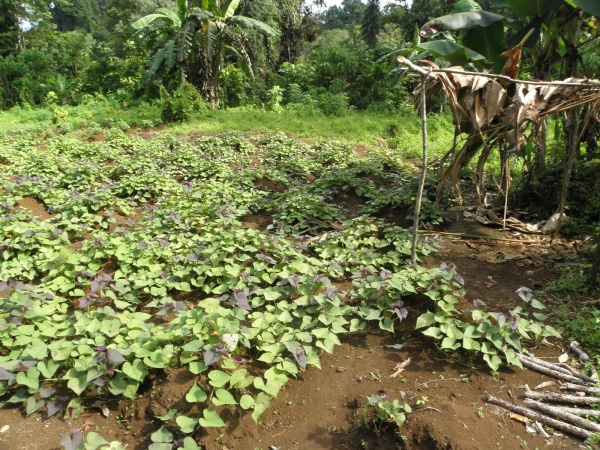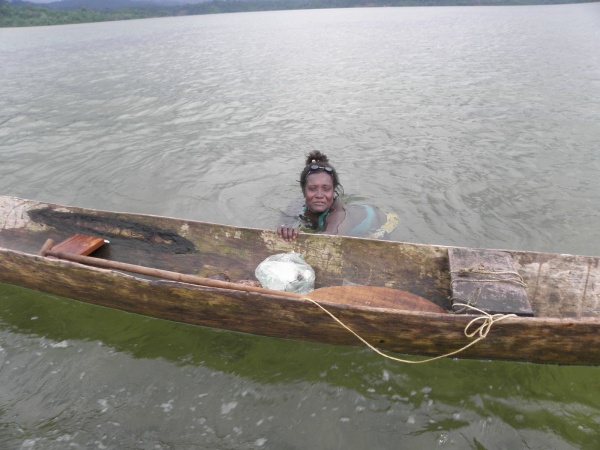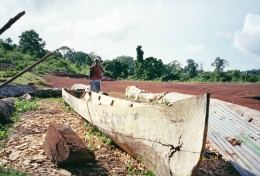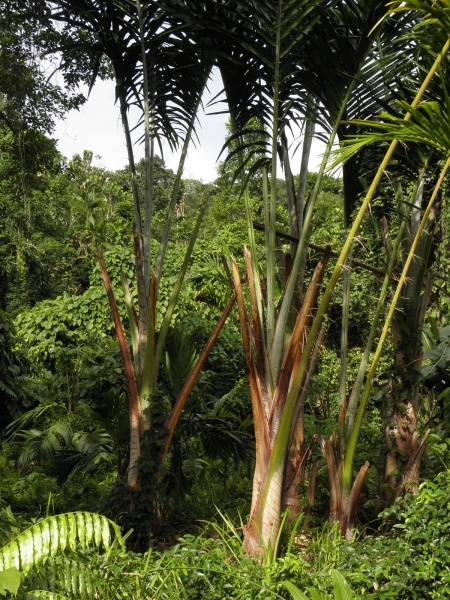Living by Utilizing Various Modified Natural Resources in the Solomon Islands
03.05.2010
-
DATE OF SUBMISSION :
-
03/05/2010
-
REGION :
-
Melanesia
-
COUNTRY :
-
Solomon Islands (New Georgia Island, Western Province)
-
SUMMARY :
-
The landscape of subsistence villages in the Solomon Islands is made up of settlements along the coastlines surrounded by various human-modified forests, forming mosaic pattern environment. The marine environment is comprised of shallow lagoons and barrier islands farther offshore. Agricultural fields are managed not on a permanent basis but according to the shifting cultivation system, in which a forest is transformed into a crop field and the field turns back into a forest again. This leads to each forest having different flora and fauna and the residents using each for a different purpose. Modified forests which have been abandoned after shifting cultivation are called Nobo, where the residents gather medicinal plants, and trees and other materials such as rattan for building houses. Primary forests are called Muge, where Gmalina moluccana trees are sometimes collected for canoe-making (with specific rules applied) and wild boar are hunted. There is various evidence of modification of the original forests by the ancestors of the local people as well as some current intervention. In recent years, under the influence of the market economy, commercial logging has been widely carried out in conjunction with industrial forestation (usually, Eucalyptus species) which could destroy the residents’ livelihood and decrease the number and variety of wild species. It is important to stop these large-scale changes and provide support for the responsible use of reserves and modified forests as well as environmentally friendly and sustainable sources of livelihood.
-
KEYWORD :
-
mosaic pattern, traditional rule, shifting cultivation
-
AUTHOR:
-
Dr. Takuro Furusawa is Associate Professor of the Network for Education and Research on Asia, the University of Tokyo. His research interests span a broad range within the field of Human Ecology, with a special emphasis on the effect of changing ecological and socioeconomic factors on human health and survival in the Solomon Islands. Dr. Ryutaro Ohtsuka graduated from Undergraduate and Master’s Courses of Biological Anthropology, Faculty/Graduate School of Science, the University of Tokyo, and worked in Human Ecology Department, Graduate School of Medicine of the same university until March 2005. From April 2005 to March 2009, he served for the National Institute for Environmental Studies as the President. He joined the Japan Wildlife Research Center in April 2009 and, since July, has been the President. His research has been focused on human–environment interactions in local ecosystems in Asia and Oceania. Dr. Masatoshi Sasaoka is a researcher with experience in environmental anthropology and Indonesian studies. He was a Japan Society for the Promotion of Science postdoctoral fellow, worked as a researcher at the Center for Social and Cultural Studies, Indonesian Institute of Sciences from 2002-2005, and at the Forest Economic Research Institute from 2005-2008. After joining at the Japan Wildlife Research Center in 2008, he has been working on projects related to international cooperation for conservation and on the Satoyama Initiative.


